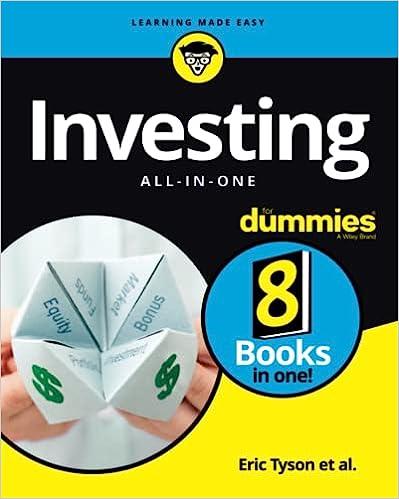Question
1. Bond valuation The process of bond valuation is based on the fundamental concept that the current price of a security can be determined by
1. Bond valuation
The process of bond valuation is based on the fundamental concept that the current price of a security can be determined by calculating the present value of its future cash flows.
A bonds coupon rate determines the interest-based return that a bond ____(<-- will-or-might?) pay, and a bondholders required rate of return reflects the return that a bondholder ____(<-- will-or-would like to) receive from the investment.
Bond valuation implies a relationship between the bondholders required rate of return, the bonds coupon rate, and the bonds par value. These relationships can be summarized as follows:
| Relationships |
|---|
| When the bonds coupon rate is equal to the bondholders required return, the bond will trade at ____ (a discount, a premium, or par?) . |
| When the bonds coupon rate is greater than the bondholders required return, the bond will trade at ____ (a discount, a premium, or par?) . |
| When the bonds coupon rate is less than the bondholders required return, the bond will trade at ____ (a discount, a premium, or par?) . |
Suppose Andrew wants to earn a return of 14.00 percent and is offered the opportunity to purchase a $1,000 par value bond that pays a 12.25 percent coupon rate (distributed semiannually) and has three years remaining to maturity.
Use the following table to fill in values for the bonds coupon payment and present value, and Andrews semiannual required rate of return for this investment.
| Variable Name | Variable Value |
|---|---|
| Coupon Payment | ($61.25/ $70.00/ $104.13/ or $122.50) |
| Semiannual Required Rate of Return | (3.81%/ 4.38%/ 7.00%/ or 9.25%) |
| Present Value | ($919.97/ $958.30/ $977.47/ or $987.05) |
Now, suppose Andrew wants to earn a return of 12.25 percent, but the bond being considered for purchase offers a coupon rate of 12.25 percent. It is a $1,000 par value bond that pays a 12.25 percent cou)pon rate (distributed semiannually) and has three years remaining to maturity. The bonds present value is$ ($1,100.00/ $950.00/ $1,050.00/ $1,000.00) , which is its par value, which means that the bond is (less than/ greater than, or equal to) .
Given your calculations and conclusions, which of the following statements are true? Check all that apply.
__ When the coupon rate is less than Andrews required rate of return, the bond should trade at a discount.
__ When the coupon rate is greater than Andrews required rate of return, the bond should trade at a discount.
__ When the coupon rate is less than Andrews required rate of return, the bond should trade at a premium.
__ When the coupon rate is equal to Andrews required return, the bond should trade at par.
Step by Step Solution
There are 3 Steps involved in it
Step: 1

Get Instant Access to Expert-Tailored Solutions
See step-by-step solutions with expert insights and AI powered tools for academic success
Step: 2

Step: 3

Ace Your Homework with AI
Get the answers you need in no time with our AI-driven, step-by-step assistance
Get Started


